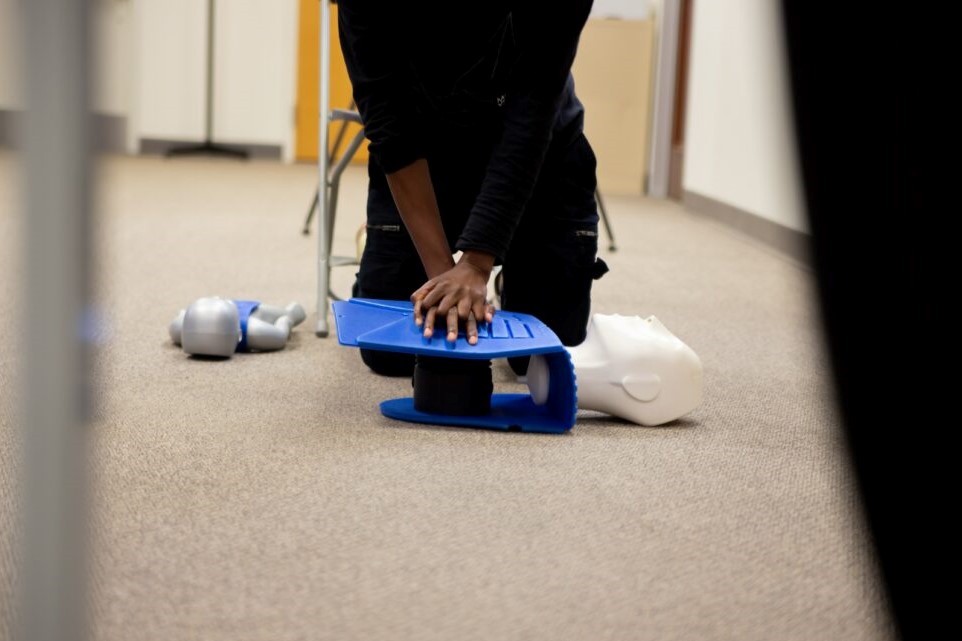
The most frequently asked questions in a first aid class
Responding to emergencies is one of the most important things you can learn in a first aid course. In an emergency, you will have the skills and knowledge to provide potentially life-saving assistance
Although many people undertake a first aid course as part of safety practice, these skills are invaluable in everyday situations.
There are many reasons to learn first aid, but there are many misconceptions and false information available online.
VISIT THE DMC DINAS MEDICAL CONSULTANTS BOOTH AT EMERGENCY EXPO
For this reason, we have put together a useful guide that answers the most frequently asked questions in a first aid course.
But first of all, what is first aid?
It is the first and immediate care given to an injured or sick person until full medical treatment is available.
The aim is to minimise injuries, prevent deterioration and, in the most serious cases, keep the victim alive.
When you understand the various rescue procedures, you acquire the ability to help those in need.
Through a first aid course, you learn how to react in specific situations where you can intervene and help while waiting for a doctor to arrive.
First aid offers the best chance of a positive outcome.
It also allows you to change someone else’s life for the better.
Frequently asked questions in a first aid course
How often should a first aid course be renewed?
Of course, the answer varies from one part of the world to another.
The recommendation in most Western countries for first aid in the workplace is to update and renew the cardiopulmonary resuscitation (CPR) course every 12 months.
Renewing certification in a first aid course, as recommended, will ensure that you are up-to-date with changes or new knowledge regarding first aid care.
What does the First Aid course cover?
The first aid course comprises a mixture of theory and practical learning in which students will be taught basic and in-depth first aid procedures.
Topics such as examining an injured person, using a defibrillator, dealing with trauma and bleeding and more will be covered.
These are skills needed to overcome life-threatening situations long enough for an ambulance to arrive on the scene.
The regionalisation of the health sector in Italy has not changed the training process too much from one region to another, mainly due to the fact that the lines on the topics covered are also quite homogeneous internationally.
Why take a training course at a Training Centre?
By taking a fully accredited course from a trusted Training Centre, you can be sure that you will experience the best teaching standards in line with current protocols.
Training by a registered and accredited body is the recommended choice for those who are serious about learning first aid.
Upon completion of the course, you will receive accreditation or a first aid certificate.
Performing first aid: When is consent implied?
Many of us have the instinct to give first aid when we witness an emergency.
However, some hesitate to intervene for fear of legal complications.
In this scenario, it is important to understand the concept of consent.
It varies depending on the area of the world one is in, but basically in virtually all Western countries, in order to provide first aid, the rescuer must ask the victim for permission or consent.
Consent is given if the person is able to communicate clearly and ask for help.
When the victim is unable to give express consent, the rescuer will rely on implied consent.
This happens when the victim is unconscious or may suffer serious injuries that prevent him/her from asking for help.
In some cases, the so-called ‘Good Samaritan‘ law raises concerns about the dreaded legal consequences of a rescue operation, but it must be considered critically and conscientiously.
Therefore, the best alternative to improvisation remains fruitful participation in training courses.
Read Also:
Emergency Live Even More…Live: Download The New Free App Of Your Newspaper For IOS And Android
How To Deal With Panic Attacks
First Aid And Epilepsy: How To Recognise A Seizure And Help A Patient
F. Aid In Case Of Food Poisoning
F. Aid, Fractures (Broken Bones): Find Out What To Look For And What To Do
Cardiac Syncope: What It Is, How It Is Diagnosed And Who It Affects
First Aid And Emergency Interventions: Syncope
Head Up Tilt Test, How The Test That Investigates The Causes Of Vagal Syncope Works
Panic Attack Disorder: Feeling Of Imminent Death And Anguish
Firefighters / Pyromania And Obsession With Fire: Profile And Diagnosis Of Those With This Disorder
Hesitation When Driving: We Talk About Amaxophobia, The Fear Of Driving
Rescuer Safety: Rates Of PTSD (Post-Traumatic Stress Disorder) In Firefighters
Italy, The Socio-Cultural Importance Of Voluntary Health And Social Work
Anxiety, When Does A Normal Reaction To Stress Become Pathological?
Defusing Among First Responders: How To Manage The Sense Of Guilt?
Temporal And Spatial Disorientation: What It Means And What Pathologies It Is Associated With
The Panic Attack And Its Characteristics
Pathological Anxiety And Panic Attacks: A Common Disorder
Panic Attack Patient: How To Manage Panic Attacks?


